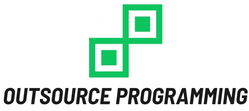Outsourcing software development has become a common practice for businesses looking to enhance their technological capabilities and stay ahead of the competition. With the global reach of talent and cost-effective solutions, it’s no wonder that more companies are opting to delegate their software development needs to external partners. However, this trend also brings with it a set of risks that need to be carefully managed in order to ensure successful outcomes.
In this blog post, we will explore the importance of risk management in outsourcing, understand the risk management framework, and discuss steps to implementing a successful risk management plan. So grab your caffeinated beverage of choice and let’s dive into the world of mitigating risks in software development outsourcing!
The Importance of Risk Management in Outsourcing
Outsourcing software development has become a popular choice for businesses looking to streamline their operations and reduce costs. However, with this decision comes certain risks that need to be managed effectively. Risk management is crucial in outsourcing because it helps identify potential pitfalls and allows for proactive measures to be taken.
One of the primary reasons why risk management is essential in outsourcing is because it helps mitigate financial risks. When you outsource software development, you are entrusting a third-party vendor with your project, data, and resources. Without proper risk management, there is a chance that the vendor may not deliver as expected or encounter financial difficulties during the project’s execution.
Effective risk management can help prevent delays in project timelines. By identifying potential risks early on and taking appropriate preventive actions, you can ensure that the outsourced project stays on track and meets its deadlines.
Risk management plays a vital role in ensuring data security when outsourcing software development. It enables businesses to assess the security protocols of vendors before partnering with them and implementing necessary safeguards throughout the collaboration.
Risk mitigation also promotes better communication between stakeholders involved in outsourcing projects. By addressing potential risks upfront and setting clear expectations from both sides, misunderstandings can be minimized or avoided altogether.
Understanding the Risk Management Framework
When it comes to outsourcing software development, understanding and implementing a risk management framework is crucial. This framework allows businesses to identify potential risks and develop strategies to mitigate them effectively.
The first step in understanding the risk management framework is recognizing that risks can come from various sources such as technology, communication gaps, cultural differences, or even geopolitical factors. By identifying these sources of risk early on, businesses can proactively address them before they become major issues.
Once the risks have been identified, businesses need to assess their potential impact. This involves evaluating the likelihood of each risk occurring and estimating its potential consequences. By assigning a level of severity or priority to each risk, businesses can prioritize their mitigation efforts accordingly.
After assessing the risks, it’s time for planning and implementing risk mitigation strategies. This phase involves developing contingency plans for each identified risk and outlining steps to minimize their impact if they occur. It’s important to involve all stakeholders in this process so that everyone understands their role in managing these risks effectively.
Regular monitoring and reassessment are also crucial components of the risk management framework. As projects progress and circumstances change, new risks may arise or existing ones may evolve. Therefore, continuous monitoring ensures that businesses stay proactive in managing any emerging threats.
By adopting a comprehensive approach through constant monitoring and clear communication channels with outsourced teams/vendors/partners involved in software development projects – companies will be better prepared to manage any unforeseen circumstances throughout project lifecycles.
Steps to Implementing a Successful Risk Management Plan
Implementing a successful risk management plan is crucial when outsourcing software development. It ensures that potential risks are identified and mitigated, reducing the chances of project failure or budget overruns. Here are some key steps to follow in order to implement an effective risk management plan:
- Identify and categorize risks: Start by conducting a thorough risk assessment. Identify all possible risks associated with the outsourcing project, such as technical issues, communication gaps, or data security breaches. Categorize these risks based on their potential impact and likelihood.
- Analyze and prioritize risks: Once you have identified the risks, analyze each one to understand its potential consequences and likelihood of occurring. Prioritize them based on their severity and probability.
- Develop mitigation strategies: For each prioritized risk, develop specific strategies to mitigate or minimize its impact if it were to occur. This may include setting up backup systems, implementing robust communication channels, or establishing strict security protocols.
- Communicate with stakeholders: Keep all relevant stakeholders informed about the identified risks and mitigation strategies throughout the software development process. This will ensure everyone is aware of potential challenges and can work together towards addressing them effectively.
- Monitor and reassess regularly: Risk management is an ongoing process that requires continuous monitoring and reassessment throughout the project lifecycle. Regularly review your risk management plan to identify any new emerging risks or changes in existing ones.
By following these steps diligently, you can significantly reduce the chances of encountering major setbacks during outsourced software development projects while maximizing success rates!
Common Risks in Software Development Outsourcing and How to Mitigate Them
When it comes to outsourcing software development, there are several common risks that can potentially derail your project. However, by implementing a robust risk management plan, you can mitigate these risks effectively.
One of the most significant risks in outsourcing software development is the lack of communication and collaboration. When working with remote teams, it’s essential to establish clear lines of communication and regular updates. Utilizing tools like video conferencing, project management software, and instant messaging platforms can help bridge the gap.
Another common risk is the potential for delays in project timelines. To avoid this issue, it’s crucial to set realistic deadlines from the start and ensure that both parties are on the same page regarding expectations. Regular monitoring of progress and effective project tracking techniques can also help identify any potential bottlenecks or issues early on.
Data security is another area where outsourcing may pose a risk. Protecting sensitive information should be a top priority when collaborating with external teams. Implementing strict data protection measures such as secure file transfer protocols (SFTP) or virtual private networks (VPNs) can significantly reduce the chances of data breaches.
Quality assurance is yet another challenge in outsourced software development projects. It’s important to establish clear quality standards from the beginning and conduct thorough testing at various stages of development. Regular code reviews, automated testing tools, and performance evaluations can all contribute to maintaining high-quality deliverables.
Cultural differences between teams located in different countries or regions can impact collaboration efficiency if not properly addressed. Taking time to understand each other’s work cultures, values, and communication styles will facilitate smoother interactions between team members.
Mitigating these risks requires proactive planning and ongoing monitoring throughout every phase of your outsourced software development project. By identifying potential risks early on, implementing effective strategies, and adapting as needed, you’ll be well-equipped to navigate through any challenges that may arise.
Best Practices for Managing Risks in Outsourcing Software Development
When it comes to outsourcing software development, managing risks effectively is crucial. By implementing best practices, organizations can mitigate potential pitfalls and ensure successful project delivery. Here are some key strategies for managing risks in outsourcing:
- Thorough Vendor Selection: Take the time to thoroughly evaluate potential vendors before making a decision. Look for companies with a proven track record, relevant experience, and strong references from past clients.
- Clear Communication: Establish clear lines of communication from the beginning of the project. Regularly communicate expectations, requirements, and milestones to ensure everyone is on the same page.
- Comprehensive Contracts: Draft comprehensive contracts that clearly define scope, timelines, deliverables, pricing structures, intellectual property rights, and dispute resolution mechanisms.
- Risk Assessment: Conduct thorough risk assessments before starting any project. Identify potential risks such as language barriers or cultural differences and develop mitigation strategies accordingly.
- Project Management Oversight: Assign dedicated project managers who will oversee all aspects of the outsourced software development process. This ensures proper coordination between internal teams and external providers.
- Regular Progress Updates: Set up regular progress updates with your outsourcing partner to stay informed about the status of your project at all times.
- Quality Assurance Measures: Implement robust quality assurance measures throughout every stage of development to minimize errors or defects in your software product.
By following these best practices for managing risks in outsourcing software development projects, organizations can optimize their chances of success while minimizing potential setbacks along the way.
Conclusion
Outsourcing software development can be a strategic move for businesses looking to leverage external expertise, reduce costs, and accelerate project timelines. However, it also comes with inherent risks that need to be managed effectively.
The risk management framework outlined in this article provides a systematic approach to identifying, assessing, mitigating, and monitoring potential risks throughout the outsourcing process. By following these steps and implementing best practices for managing risks in software development outsourcing, organizations can minimize the likelihood of disruptions and maximize the success of their projects.
Remember that effective risk management is an ongoing process that requires continuous evaluation and adaptation. As technology evolves and business needs change, new risks may emerge or existing ones may evolve. Therefore, it is crucial to stay vigilant and proactive in your risk management efforts.
By prioritizing risk management from the outset of an outsourcing engagement and maintaining open lines of communication with your outsourcing partner(s), you can foster collaboration and ensure that everyone remains aligned towards achieving project goals while minimizing any potential negative impacts.
By understanding the importance of risk management in outsourcing software development and implementing a robust framework to address potential challenges head-on, businesses can unlock the full benefits of outsourcing while safeguarding against potential pitfalls along the way.


Leave A Comment Cancel reply